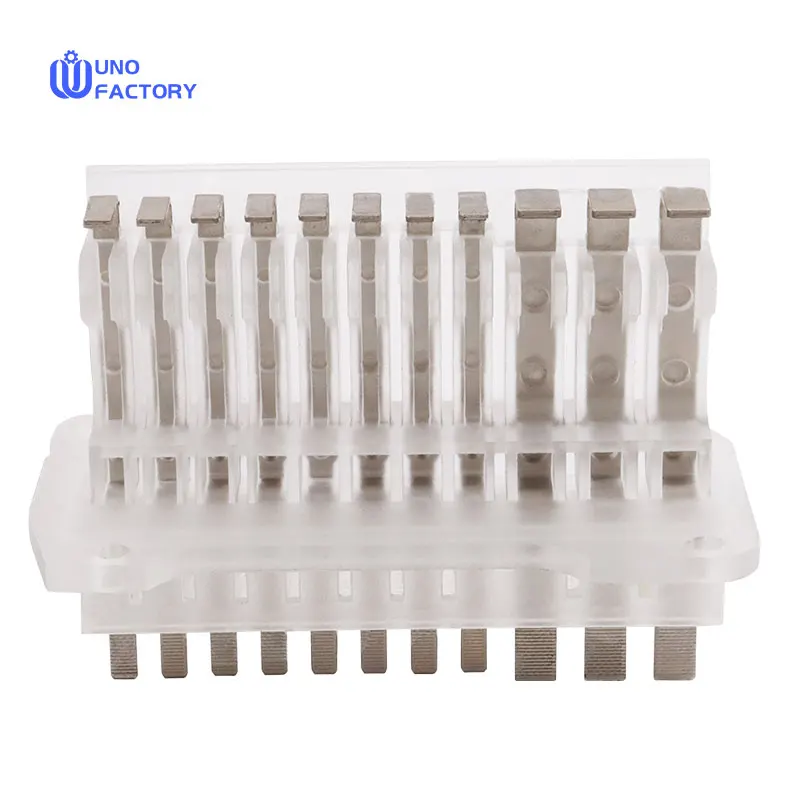Time to read: 6 min

In the realm of modern manufacturing, the demand for lightweight, strong, and durable components has never been higher. Insert molding is a process that answers these needs by integrating metal inserts into plastic parts, creating a hybrid product with the best of both materials. This article will guide you through the world of insert molding, exploring its benefits, considerations, and wide-ranging applications.
What Is Insert Molding?
Insert molding is an injection molding technique where metal inserts are placed into the mold cavity before the injection of molten plastic. This method ensures a strong bond between the plastic and the insert, resulting in a part that combines the strength of metal with the versatility of plastic. By using insert molding, manufacturers can create components that are both lightweight and durable, ideal for a variety of applications.
How Insert Molding Works
The process of insert molding is similar to conventional injection molding but with a crucial addition: the placement of metal inserts. Here's a step-by-step breakdown of the insert molding process:
Step 1: Load Inserts Into the Mold
The first step involves loading the metal inserts into the mold cavity. This step is critical, as the precise placement of the inserts ensures correct orientation and location within the final part.
Step 2: Inject the Molten Plastic Into the Mold
Next, molten plastic is injected into the mold under high pressure, ensuring that the plastic completely envelops the insert and fills every part of the mold.
Step 3: Open the Mold and Remove the Molded Part
After the plastic has cooled and solidified, the mold is opened, and the part is removed. This step requires careful control of temperature and pressure to ensure the part's quality.
Step 4: Separate the Molded Part From the Sprue
The molded part is then separated from the sprue, the framework from which it was molded. This step requires precision to avoid damaging the part.
Step 5: Post Processing
Post-processing treatments such as deburring, heat treatment, surface finishing, and humidity control may be applied to ensure the part meets specific requirements.
Considerations During the Insert Molding Process
Several factors must be considered when undertaking insert molding, including the design of the mold, the type of inserts used, and the method of insertion (automated or manual). The choice of resin and molding conditions is also crucial for the success of the insert molding process.
Benefits of Insert Molding
Insert molding offers numerous advantages over other manufacturing processes, including:
- Cost-Effectiveness: By combining materials in a single process, insert molding reduces assembly costs and material waste.
- Design Flexibility: Designers can incorporate metal inserts into plastic parts to create features that enhance strength and functionality.
- Increased Part Reliability: The strong bond between the plastic and metal ensures that parts made through insert molding are durable and reliable.
Applications of Insert Molding
Insert molding is widely used across various industries, including aerospace, automotive, medical devices, consumer electronics, and defense. Each industry leverages insert molding to create components that meet specific performance and durability requirements.
Make Custom Insert Molded Parts with Unofactory
At Unofactory, we specialize in insert molding and offer a range of services to meet your manufacturing needs. Our team of engineers will work closely with you to ensure that your parts are produced to the highest standards, using the most cost-effective methods.
Contact Unofactory today to discuss your insert molding requirements and get a quote for your custom molded parts.
Conclusion
Insert molding is a versatile and efficient manufacturing process that combines the strengths of metal and plastic to create high-quality components. By choosing Unofactory for your insert molding needs, you can benefit from our expertise, ensuring that your parts are produced with precision and reliability.




